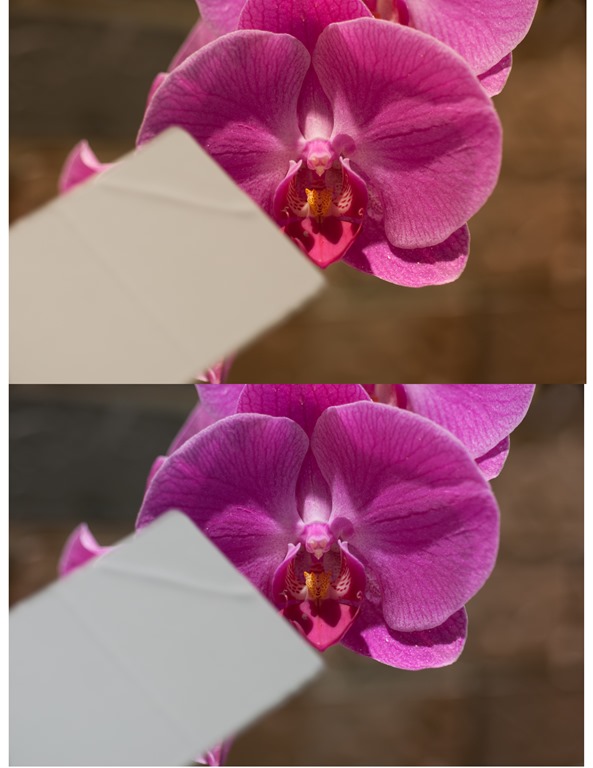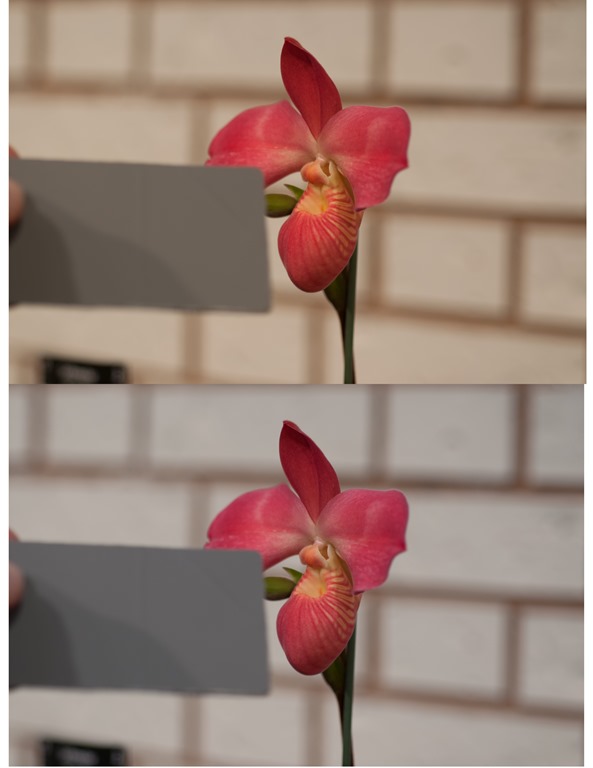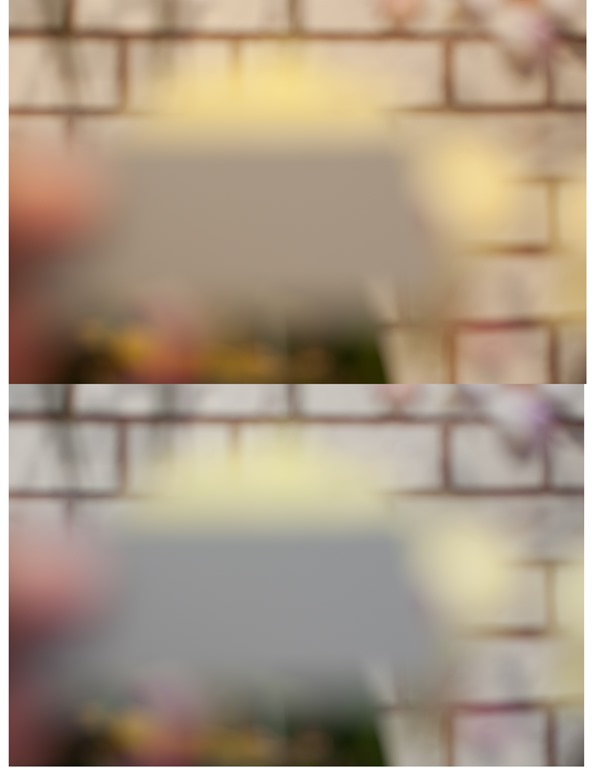Recently I read an article about grey cards and how they were not useful in photography. The more I read into that article, the more I was thinking I needed to set that straight. More or less. If grey cards were “invented” and used for a long time, then they should have some merit, right?
So here’s the idea of that article. Using a grey card can destroy the mood you felt when taking the picture, don’t use a grey card. And don’t ever use AWB or Auto White Balance on your camera. While I can agree with the idea, tossing out the grey cards from your camera bag seems too radical to me.
When you are shooting in an indoor environment, usually the light is adapted to the needs of the event. Bright light, usually mercury pressure lamps are used to get enough light on a scene or subjects. Sometimes… not so much.
Take a look at these pics from an orchid show in Winnipeg.

The top picture is the unprocessed version of the bottom pic. Our eyes are taking this in and decide that the colours are perfect, as are the flowers. Right? Not so much. Adding a shot of a grey card allows us to quickly adjust the white balance of the shot. In these cases, like a flower exhibition, it seems obvious to me to use that card. Even more so after the lights were turned off (it was early morning at first) to make way for natural sunlight coming through the glass roof. Another shot with a grey card made it possible to balance all pictures in the same way.

Other parts of the exhibition were lit with halogen lights. Now halogen lights are bright and white, right? Nope, Wrong again. They are incandescent, bright and… orangey. The grey card again provided a good reference for colour adjustment. The card doesn’t have to be “in the shot” or in focus.

Just to have that grey blob in your shot is good enough. Also it’s enough to have one shot for all the pictures shot in the same conditions. No need to take a grey card together with each shot.

Other venues have fairly good lighting, like this wrestling tournament. However, taking that grey card just got the edge off the still present mercury pressure lights and the picture on the right just looks a little better to me. Indoor sports are notable for bad lighting. I always use a grey card as a starting point for my shots. After that, I can adjust in Lightroom or Photoshop and get as close as I can to the shots I want to show. The grey card is not the boss of my white balance. I am… ![]()
Does it make all shots perfect, always? No, again, sometimes taking a shot in certain “out of balance” conditions is the way you really want to have that picture. Imagine a nice sunset with everything bathing in that golden light. Use a grey card on that and the picture becomes sterile. The Blue hour? Well, if that is what you are after, the grey card is not going to help you. However, I do take a shot of it sometimes, just to see how far “off” it will take me.
So back to that article I read. It told me to throw out my grey card. You have guessed, I will not do so. It gives a good start on how picture should clinically look. After that it’s a matter of taste and mood.
And that is exactly why we call ourselves photographers, not photocopiers. Right?
